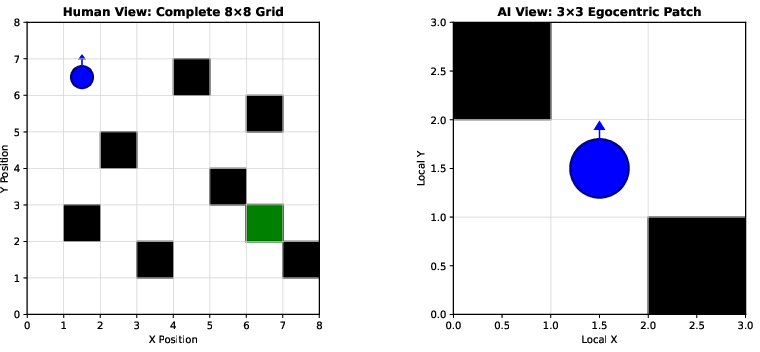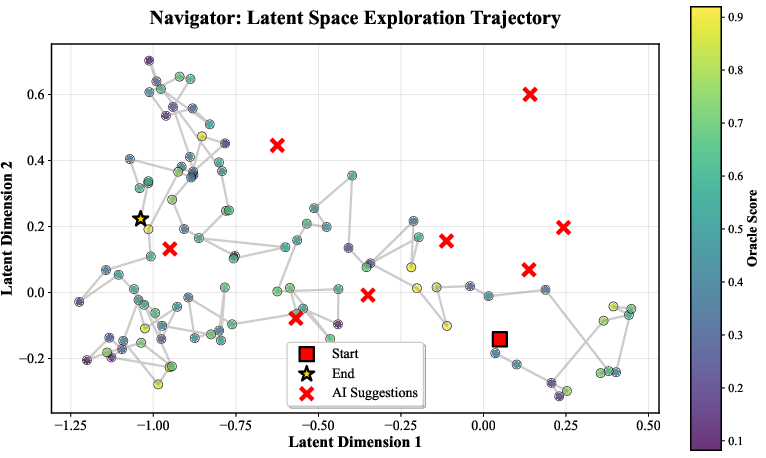- The paper introduces a novel bidirectional cognitive alignment framework, challenging traditional unidirectional AI alignment methods.
- It employs a mix of recurrent neural networks, adaptive protocols, and KL-budget constraints to optimize human-AI collaboration.
- Experimental evaluations in collaborative navigation show significant improvements in success rates and efficiency, highlighting enhanced communication and safety.
Co-Alignment: Rethinking AI Alignment through Bidirectional Human-AI Cognitive Adaptation
Introduction
The paper "Co-Alignment: Rethinking Alignment as Bidirectional Human-AI Cognitive Adaptation" introduces a paradigm shift in AI alignment mechanisms, proposing a Bidirectional Cognitive Alignment (BiCA) framework instead of the traditional unidirectional model. Traditional AI alignment methods focus on conforming AI systems to human preferences, treating human cognition as a static system. BiCA challenges this notion by emphasizing mutual adaptation where both AI agents and humans adjust their practices and cognitive states, thereby fostering development of emergent communication protocols.
This bidirectional approach leverages learnable protocols, representation mapping, and KL-budget constraints, thereby enhancing mutual adaptation. The results demonstrate significant improvements in collaborative tasks indicating the substantial benefits of co-evolutionary dynamics over unilateral adaptation—an approach in alignment with cognitive science insights and emergent communication principles.
Methods and Implementation
BiCA Framework Overview
The BiCA framework integrates multiple components to facilitate bidirectional adaptation and optimize task performance:
- AI Policy Network: Utilizes a recurrent architecture to manage temporal dependencies. The AI observes and acts based on human inputs, processed using GRU-based embeddings.
- Human Surrogate Network: Employs context-dependent communication protocols, facilitating dynamic adjustments to environmental changes and agent interactions.
- Protocol Generator: Implements Gumbel-Softmax for learning adaptive discrete communication protocols, adapting to task-specific contexts using annealed temperatures.
- Representation Mapper: Aligns cognitive representations between human and AI spaces using a GRU and MLP, facilitating direct comparison and alignment.
- Instructor Network: Provides adaptive guidance, optimizing for long-term task effectiveness while minimizing cognitive load.
Optimization Objective
The BiCA framework optimizes task performance subject to bidirectional alignment constraints. It applies KL budgets to control cognitive drift, an information bottleneck for communication efficiency, and representation alignment using Wasserstein distance and Canonical Correlation Analysis (CCA). An adaptive penalty on instructor interventions encourages autonomous agent behavior.
Implementation Steps
To implement this framework:
- Define the multi-agent environment, including asymmetric information flows between human and AI agents.
- Implement the BiCA components within a neural framework, ensuring seamless integration using recurrent units for temporal dependency management.
- Optimize using alternating updates across components to mitigate gradient conflicts, applying customized loss functions for protocol learning and representation alignment.
Experimental Evaluation
Collaborative Navigation (MapTalk)
Experiments in the MapTalk domain show BiCA achieving superior results compared to unidirectional baselines, marking a 21.6% improvement in success rates and a 9.9% reduction in average steps required. Emergent protocols demonstrated a 332% rise in convergence rates (Figure 1).

Figure 1: Ablation paper overview: normalized colors (per metric) with raw values annotated. Metrics shown: success rate, BAS score, CCM score, and average steps. Variants are ordered by success rate.
Representation Alignment (Latent Navigator)
In continuous latent space navigation, BiCA demonstrates effective alignment via β-VAE, achieving substantial correlations between human and AI representations. Preference correlation metrics underscore improved adaptability in valuing human preferences.


Figure 2: Environment screenshots for our two tasks. (a) MapTalk: collaborative navigation with asymmetric observations and discrete protocol. (b) Latent Navigator: human-in-the-loop exploration of latent space with VAE decoding.
Discussion
BiCA provides a compelling alternative to traditional AI alignment methodologies, showcasing improved performance across communication and representation metrics. This bidirectional model not only enhances emergent protocol development but also improves safety and adaptability in out-of-distribution scenarios. Future implications include scaling BiCA to more complex environments and integrating foundation models into this adaptive framework.
Conclusion
The introduction of BiCA signifies a pivotal shift in understanding AI-human collaboration. By embracing mutual adaptation, optimal collaboration strategies are realized at the intersection of human and AI capabilities. These findings necessitate a reevaluation of existing alignment paradigms, suggesting that mutual cognitive alignment may be paramount for future AI systems to function as genuine partners rather than passive tools. Limitations, including scalability challenges and ethical considerations regarding AI's influence on human cognition, highlight areas for future research and development.


